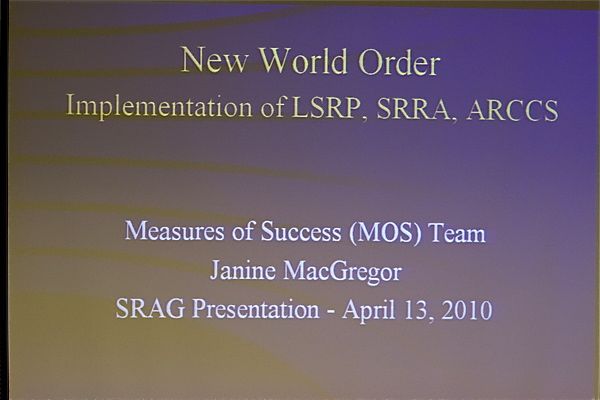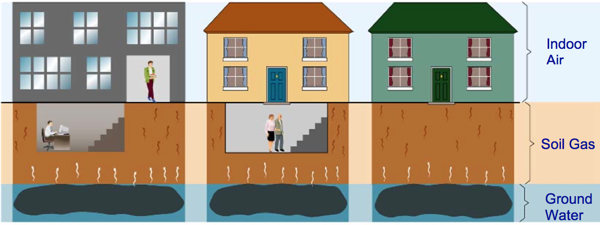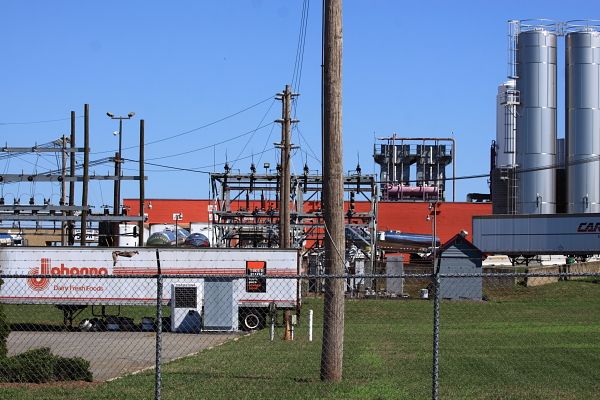DEP Privatizes Public Communication on Toxic Indoor Hazards
DEP Provides “Courtesy” Guidance to Polluters – Real “Customer Service”!
[Update: Compare NJ DEP privatization with US EPA approach to notifying the public – imagine that, EPA recommends “immediate” notification and face to face meetings” and “community meetings”
B.2 How should building owners or renters be notified of sampling results and whether a VI mitigation system is needed?
Generally, the site team should provide validated sampling results to property owners or renters within 30 days after the results have been received (EPA 1990b). Use of real-time or near-real time sampling, such as a field gas chromatograph/mass spectrometer (GC/MS) or Hapsite GC/MS, reduces the delay between the sampling event and receipt of initial results. In such cases, the building owner or renter can view the preliminary results almost immediately and receive the final results after data validation. A transmittal letter should indicate if any future actions are appropriate based on the sampling events. It is important to communicate to property owners and renters that the determination to install a VI mitigation system is based on a calculated risk, which reflects many conservative, health protective factors.
The initial notification to owners or renters that their home or building has been selected to receive a VI mitigation system can be delivered in various ways. A primary mechanism is a face-to-face meeting with the building owner or renter to explain the data results and discuss next steps, including installation of a system. Another mechanism is to use the data transmittal letter to provide the notification. In many cases, however, the decision to install mitigation systems will not have been made before the sampling results are transmitted. In these situations, data transmittal letters can be sent conveying the message that the EPA is reviewing all results for the affected area and is considering appropriate next steps. Once the decision document is signed, the site team can develop and mail a fact sheet to all community members in the affected area, followed by a community meeting. If mitigation systems are deemed appropriate, the site team should be prepared to explain the impacts of installing these systems in face-to-face meetings with the property owners or renters. These meetings should include a discussion of whether the property owner or renter will be responsible to pay the electrical cost to operate a mitigation system, which may range from $10 to $20 or more per month. Impacts including the need to remove basement contents to allow installation should also be discussed with the property owner or renter.
In a bizarre email that transmits the latest “courtesy” Guidance document in the bizarro NEW WORLD ORDER (AKA “Privatized Toxic Site Cleanup Program“), DEP is now teaching private consultants – AKA “mercenaries” who work for polluters – how to conduct “community outreach” and “communicate with the public” about testing the indoor air in homes, schools, daycare centers, and businesses.
The New Jersey Department of Environmental Protection has developed community outreach guidance for environmental consultants and responsible parties to use when performing vapor intrusion investigations. The community outreach guidance contains recommendations for communicating with the public when setting up sampling appointments, reporting results, and other vapor intrusion activities. The guidance is available at www.nj.gov/dep/srp/guidance/vaporintrusion.
Talk about the blind leading the blind.
Do you think these consultants have any incentive or interest in telling you the truth, the whole truth, and nothing but the truth about the toxic chemicals their clients have exposed your family to?
Can you spell : c-o-n-f-l-i-c-t of i-n-t-e-r-e-s-t?
Does anyone remember company doctors that worked for the coal, asbestos, or chemical industries giving their workers a clean bill of health?
How would you feel if the lawyer for the company you just sued was in complete charge of providing all information to you?
Despite giving private consultants complete control over the creation and flow of information provided to the public, the DEP has been so neutered and in the pocket of polluters that they felt the need to stress the fact that the “courtesy” Guidance was purely voluntary and not a DEP mandate:
Please note that the template letters and tables are being provided as a courtesy and use of these templates is optional. If you choose to develop your own letters, please see the note at the bottom of the web page for information on how to communicate with the public.
In an historic first, DEP is now providing “courtesy” Guidance and voluntary options to toxic polluters!
Chris Christie and Bob Martin don’t need no stink in’ “command and control” regulations!
Now that’s real “customer service”! Commissioner Martin must be thrilled (it’s pretty clear who the “customer” being “served” is).
[Note: the intent of the legislation was to retain DEP oversight of complex and/or high risk cases. Because many vapor intrusion sites are “immediate environmental concern” and impact “sensitive receptors”, they are inherently complex high risk cases. DEP is violating the intent of the law by allowing private LSRP’s to manage these cases. Senator Smith and Assemblyman McKeon (prime sponsors), where is the Legislative oversight on this??]
But, giving polluters’ consultants total control over the content and flow of information and making sure that they are voluntary options provided as a courtesy is not all!
In two of the most egregious parts of this “courtesy” Guidance, DEP reveals both arrogance and bias.
First, the “courtesy” Guidance goes out of its way to advise polluters’ consultants of the availability of a huge loophole: blame the victim:
The list of common household sources of background indoor air contamination is available in Appendix H of NJDEP’s Vapor Intrusion Technical Guidance. Include this attachment when one or more of the compounds on this list is detected in the indoor air and believed to be due to a background source.
This “background source” loophole allows polluters’ consultants to blame things like carpets, household cleaning products, or even candles for the toxic chemicals detected in indoor air. DEP even gives them a list of the products to look for!
Second, DEP reveals their true technocratic arrogance in this “important note”:
It is important to note that NJDEP does not recommend providing the laboratory analytical data sheets to property owners as these are often too complicated for the lay person. Please use the template tables provided in Section II.
Let’s repeats that: data are “too complicated for the lay person” (sic). (boldface mine)
Got that? DEP thinks you’re just too stupid.
But somehow you know enough probability and statistics to understand Derek Jeter’s on base percentage and batting average compared with A-Rod’s slugging percentage and the opposing pitcher’s ERA – and whether a bunt or intentional walk is the best strategy in a one run game in the bottom of the eight with the leadoff man on first.
So, because it’s all too complicated, let me draw you pictures – try these, first from the sky and then from the ground (these are DEP’s own illustrations):


















